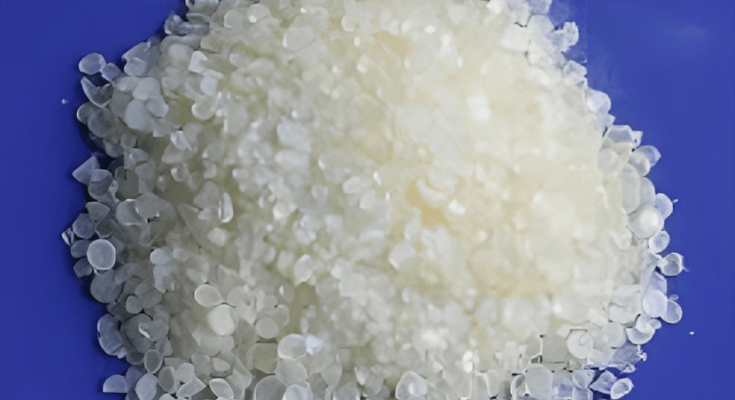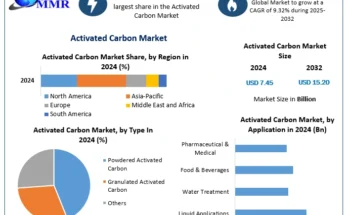Global Petroleum Resin Market has valued at USD3.18 billion in 2022 and is anticipated to project robust growth in the forecast period with a CAGR of 4.86% through 2028. The large-scale use of these products, owing to their various advantages including excellent thermal stability, peeling strength, tackability, heat-resistance, and a high softening point, is expected to significantly augment the industry growth over the forecast period. With the rising demand for petroleum resins in various applications such as contact adhesives, footwear and leather, hot melt adhesives, rubber and plastic modification, and wax modification, the industry growth is set to experience a substantial boost.
Furthermore, the increasing use of these products in the paints and coatings industry, thanks to their ability to offer high gloss, is expected to further fuel the demand over the forecast period. The good compatibility of these resins with various products, including EVA, SBS, SIS, and SEPS, is another factor that is anticipated to contribute to the market share growth in the coming years.
The application scope of these resins has been continuously expanding, ranging from adhesives, printing inks, tapes & labels, to rubber compounding, which has led to a growing need for innovation in this industry. Moreover, the development of the paints and coatings industry in countries such as Indonesia, the U.S., India, Germany, and China, along with increasing government spending in the packaging sector in India, Mexico, and Saudi Arabia, is expected to provide a significant impetus for growth.
In addition, the growing consumer awareness regarding baby hygiene products in emerging economies, particularly in India and China, is expected to play a critical role in determining the industry’s growth trajectory over the forecast period.
However, it is important to note that the volatility in crude oil prices and the increasing consumption of rosin resins in various applications, including construction and automotive, are expected to pose challenges and restrict the overall product growth over the forecast period. Nonetheless, technological advancements aimed at introducing new process technologies and increasing output levels are expected to create new growth avenues and opportunities in the industry.
Key Market Drivers
Growing Demand of Petroleum Resin in Construction Industry
The surge in infrastructure development worldwide, particularly in emerging economies, has significantly boosted the demand for petroleum resins. These versatile resins play a crucial role in the production of paints, adhesives, and sealants, which are extensively utilized in various construction activities. As countries continue to invest in infrastructure development to support economic growth, the demand for petroleum resin is expected to experience a substantial increase.
Petroleum resins offer a wide range of benefits that make them highly attractive to the construction industry. One of their key advantages is their exceptional adhesive properties, ensuring strong and long-lasting bonds between different materials. Moreover, petroleum resins exhibit superior thermal stability, high resistance to acids, and remarkable durability, making them an ideal choice for construction applications that require robust and reliable performance.
In recent years, petroleum resins have been increasingly adopted in road construction due to their remarkable waterproofing and adhesive properties. These resins are extensively used in the formulation of hot-melt road marking paints, providing not only excellent color stability but also good flow properties and enhanced nighttime visibility. This ensures safer and more efficient road markings, thereby contributing to improved road safety and navigation.
The growing emphasis on sustainability in construction practices has further fueled the demand for petroleum resins. These resins are derived from by-products of the petrochemical industry, making them a more environmentally friendly choice compared to other synthetic materials. By utilizing petroleum resins, the construction industry can reduce its ecological footprint while still maintaining high-performance standards.
In conclusion, the increasing demand for petroleum resins in the construction industry serves as a vital driver for the global petroleum resin market. The simultaneous rise in infrastructure development, the exceptional properties offered by petroleum resins, their wide adoption in road construction, and the growing demand for sustainable construction materials all contribute to the upward trajectory of this market. As these trends persist and evolve, the petroleum resin market is poised to witness significant growth in the coming years, catering to the ever-expanding needs of the construction industry.
Download FREE Sample Report @ https://www.techsciresearch.com/sample-report.aspx?cid=2792
Growing Demand of Petroleum Resin in Automotive Industry
One of the primary drivers of the petroleum resin market is its growing demand in the construction industry. Petroleum resins are extensively used in the production of paints, adhesives, and sealants, which are vital components in various construction activities such as building construction, infrastructure development, and renovation projects. The versatility of petroleum resins allows them to be used in a wide range of applications, including coatings for walls, floors, and ceilings, as well as bonding agents for different construction materials.
Another significant factor contributing to the growth of the petroleum resin market is its increasing adoption in road construction. Petroleum resins are specifically used in hot-melt road marking paints due to their excellent color stability, good flow, and enhanced nighttime visibility. These resins help create durable and highly visible road markings, improving road safety and reducing the risk of accidents. The use of petroleum resins in road construction also ensures long-lasting and weather-resistant road markings, minimizing the need for frequent maintenance and repainting.
The growing emphasis on sustainability in construction practices has also fueled the demand for petroleum resins. Derived from by-products of the petrochemical industry, petroleum resins are considered a more sustainable choice compared to other synthetic materials. Their production helps reduce waste and utilize resources efficiently, contributing to a more environmentally friendly construction industry. Additionally, the durability and longevity of petroleum resins in various applications reduce the overall environmental impact by minimizing the need for frequent replacements and repairs.
In conclusion, the global petroleum resin market is experiencing significant growth driven by increasing demand from the construction industry, advancements in road construction techniques, and a growing focus on sustainability. With the added detail and these trends set to continue, the petroleum resin market is poised for further expansion in the coming years, playing a crucial role in the development of sustainable and efficient construction practices worldwide.
Key Market Challenges
Competition from Bio-based and Alternative Resins
Bio-based resins are gaining popularity due to their numerous environmental benefits. These resins, derived from renewable resources such as agricultural crops and biomass, offer a sustainable alternative to traditional petroleum-based resins. Not only do they reduce dependence on fossil fuels, but they also help mitigate greenhouse gas emissions. The global bio-based resins market is projected to witness a robust growth rate, with a compound annual growth rate (CAGR) of over 16% during the forecast period, indicating a strong demand for these eco-friendly products.
While bio-based resins often exhibit different properties and performance characteristics compared to their petroleum-based counterparts, ongoing research and development efforts are focused on bridging this gap. With advancements in technology and production processes, the costs associated with bio-resin production are steadily decreasing, making bio-based resins more competitive and economically viable.
The market shift towards sustainable materials is another significant factor influencing the petroleum resin market. As industries increasingly recognize the importance of environmental stewardship and face regulatory pressures, there is a growing demand for greener alternatives. Bio-based resins, being derived from renewable resources and offering a lower carbon footprint, align perfectly with this sustainability trend.
It is true that bio-based resins face competition from well-established petroleum-based resins in terms of cost, performance, and availability. However, as the emphasis on sustainability continues to grow and more efficient production technologies emerge, bio-based resins are expected to become increasingly competitive in the market. The ongoing innovation and adoption of bio-based resins will contribute to a more sustainable future, benefiting both the environment and various industries dependent on resin materials.
Key Market Trends
Shift Towards Environmentally Friendly Formulations
The impact of petroleum-based products on the environment is an increasingly pressing concern worldwide. As awareness of climate change and environmental degradation grows, there is a growing need for more sustainable alternatives to traditional petroleum-based resins. This has led to the exploration and development of bio-based and plant-based resins, which offer a greener and more eco-friendly solution.
While petroleum-based resins, such as olefins, have become more affordable due to the drop in oil prices, their negative environmental impact cannot be ignored. This has prompted a shift in preference towards greener options that have a lower carbon footprint and minimize harm to ecosystems.
In addition, regulatory bodies across the globe are implementing stricter environmental regulations to reduce the use of hazardous substances. This has created a strong impetus for industries, such as the aliphatic solvents and thinners industry, to focus on developing eco-friendly formulations. The demand for sustainable solvents has witnessed a noticeable surge as companies strive to meet these stringent regulations.
Furthermore, consumers are increasingly conscious of the environmental and health impacts of the products they use. In the coatings industry, for instance, there is a growing preference for low VOC (Volatile Organic Compounds) paints that are safe to be applied inside homes. This consumer demand for environmentally friendly and health-conscious products is driving manufacturers to prioritize the development and usage of resins obtained from biological sources.
As a result, the alkyd resin market, primarily used in paints and coatings, is poised for significant growth in the coming years. This growth can be attributed to the development of environmentally friendly alkyd resins, which align with the changing preferences and values of consumers.
By embracing these sustainable alternatives, industries and manufacturers can not only reduce their environmental footprint but also meet the evolving demands of consumers who prioritize eco-friendly and health-conscious choices.
Segmental Insights
Type Insights
Based on the category of type, the Aliphatic C5 resins segment emerged as the dominant player in the global market for Petroleum Resin in 2022. The upward trend of the C5/C9 hydrocarbon market is expected to continue over the forecast period. This can be attributed to the growing utilization of C5 resins in various industries such as tire manufacturing, personal hygiene products, automotive applications, and building and construction sectors. The increasing demand for C5 resins is primarily driven by their exceptional properties, including high chemical resistance, low pollutant emissions, strong adhesion, and excellent color retention. These desirable characteristics are anticipated to further boost the demand for C5 resins in the coming years.
Moreover, the C5/C9 hydrocarbon market is projected to experience a significant revenue rise, with a predicted compound annual growth rate (CAGR) of 7.2% from 2017 to 2025. The consumption of C5/C9 hydrocarbons is expected to witness a surge in sectors such as printing ink, rubber production, paints, and tire manufacturing. The product offers a wide range of superior properties, including peeling strength, tack ability, heat-resistance, chemical stability, miscibility, low molecular weight, and high waterproofing.
Furthermore, factors such as the comparatively lower price of C5/C9 petroleum in comparison to C5 resins and the increasing usage of this hydrocarbon in the tire industry due to its excellent tack and adhesion between rubber particles and cord are anticipated to drive the demand for C5/C9 hydrocarbons over the forecast period. These factors collectively contribute to the positive growth outlook for the C5/C9 hydrocarbon market.
Application Insights
The Paints & Coatings segment is projected to experience rapid growth during the forecast period. Petroleum resins, acting as a binder resin, provide a wide range of advantages in various applications. Notably, they exhibit fast drying properties, ensuring efficient production processes. Additionally, these resins demonstrate excellent resistance to alkali and abrasion, resulting in durable and long-lasting coatings. Moreover, they have the ability to enhance the gloss of paint, as well as improve adhesion, hardness, and resistance to alkali and acids.
Furthermore, petroleum resins exhibit remarkable compatibility with pigments, auxiliary agents, and resin rosins. This compatibility enhances the overall tenacity, rigidity, and adhesive force of paint materials, ultimately contributing to the formation of a smooth and flawless paint surface. The increasing demand for resins in the road marking paint industry is primarily driven by their exceptional performance, brightness, and quick dryness, making them a preferred choice in this sector. As a result, the market potential for petroleum resins is expected to witness significant growth.
Paint plays a crucial role in marking travel lanes, loading zones, and parking spaces, ensuring safety and organization on roads and highways. With the focus on infrastructure development and the construction of new highways, there is a growing need for high-quality petroleum resins. Additionally, the emphasis on repair and maintenance operations further contributes to the demand for these resins, driving the growth of the global petroleum resins market.
Related Reports
Amines Market [2028] – Trends, Share & Forecast
Isoprene Market [2028] – Analysis, Trends, & Insights
Table of Content-Petroleum Resin Market
- Product Overview
1.1. Market Definition
1.2. Scope of the Market
1.2.1. Markets Covered
1.2.2. Years Considered for Study
1.2.3. Key Market Segmentations
- Research Methodology
2.1. Objective of the Study
2.2. Baseline Methodology
2.3. Key Industry Partners
2.4. Major Association and Secondary Sources
2.5. Forecasting Methodology
2.6. Data Triangulation & Validation
2.7. Assumptions and Limitations
- Executive Summary
3.1. Overview of the Market
3.2. Overview of Key Market Segmentations
3.3. Overview of Key Market Players
3.4. Overview of Key Regions/Countries
3.5. Overview of Market Drivers, Challenges, Trends
- Global Petroleum Resin Market: Demand-Supply Analysis
4.1. By Region
- Global Petroleum Resin Market Outlook
5.1. Market Size & Forecast
5.1.1. By Value
5.2. Market Share & Forecast
5.2.1. By Type (Aliphatic C5 resins, Aromatic C9 Resins, C5/C9 Resins and Hydrogenated hydrocarbon Resins)
5.2.2. By Application (Adhesive & Sealants, Printing Inks, Tapes & Labels, Rubber Compounding, Paints & Coatings, Others)
5.2.3. By End User (Building & Construction, Consumer Goods, Automotive, Personal Hygiene, Tire and Others)
5.2.4. By Region
5.2.5. By Company (2022)
5.3. Market Map
5.3.1. By Type
5.3.2. By Application
5.3.3. By End User
5.3.4. By Region
- Asia Pacific Petroleum Resin Market Outlook
6.1. Market Size & Forecast
6.1.1. By Value
6.2. Market Share & Forecast
6.2.1. By Type
6.2.2. By Application
6.2.3. By End User
6.2.4. By Country
6.3. Asia Pacific: Country Analysis
6.3.1. China Petroleum Resin Market Outlook
6.3.1.1. Market Size & Forecast
6.3.1.1.1. By Value
6.3.1.2. Market Share & Forecast
6.3.1.2.1. By Type
6.3.1.2.2. By Application
6.3.1.2.3. By End User
6.3.2. India Petroleum Resin Market Outlook
6.3.2.1. Market Size & Forecast
6.3.2.1.1. By Value
6.3.2.2. Market Share & Forecast
6.3.2.2.1. By Type
6.3.2.2.2. By Application
6.3.2.2.3. By End User
6.3.3. Australia Petroleum Resin Market Outlook
6.3.3.1. Market Size & Forecast
6.3.3.1.1. By Value
6.3.3.2. Market Share & Forecast
6.3.3.2.1. By Type
6.3.3.2.2. By Application
6.3.3.2.3. By End User
6.3.4. Japan Petroleum Resin Market Outlook
6.3.4.1. Market Size & Forecast
6.3.4.1.1. By Value
6.3.4.2. Market Share & Forecast
6.3.4.2.1. By Type
6.3.4.2.2. By Application
6.3.4.2.3. By End User
6.3.5. South Korea Petroleum Resin Market Outlook
6.3.5.1. Market Size & Forecast
6.3.5.1.1. By Value
6.3.5.2. Market Share & Forecast
6.3.5.2.1. By Type
6.3.5.2.2. By Application
6.3.5.2.3. By End User
- Europe Petroleum Resin Market Outlook
7.1. Market Size & Forecast
7.1.1. By Value
7.2. Market Share & Forecast
7.2.1. By Type
7.2.2. By Application
7.2.3. By End User
7.2.4. By Country
7.3. Europe: Country Analysis
7.3.1. France Petroleum Resin Market Outlook
7.3.1.1. Market Size & Forecast
7.3.1.1.1. By Value
7.3.1.2. Market Share & Forecast
7.3.1.2.1. By Type
7.3.1.2.2. By Application
7.3.1.2.3. By End User
7.3.2. Germany Petroleum Resin Market Outlook
7.3.2.1. Market Size & Forecast
7.3.2.1.1. By Value
7.3.2.2. Market Share & Forecast
7.3.2.2.1. By Type
7.3.2.2.2. By Application
7.3.2.2.3. By End User
7.3.3. Spain Petroleum Resin Market Outlook
7.3.3.1. Market Size & Forecast
7.3.3.1.1. By Value
7.3.3.2. Market Share & Forecast
7.3.3.2.1. By Type
7.3.3.2.2. By Application
7.3.3.2.3. By End User
7.3.4. Italy Petroleum Resin Market Outlook
7.3.4.1. Market Size & Forecast
7.3.4.1.1. By Value
7.3.4.2. Market Share & Forecast
7.3.4.2.1. By Type
7.3.4.2.2. By Application
7.3.4.2.3. By End User
7.3.5. United Kingdom Petroleum Resin Market Outlook
7.3.5.1. Market Size & Forecast
7.3.5.1.1. By Value
7.3.5.2. Market Share & Forecast
7.3.5.2.1. By Type
7.3.5.2.2. By Application
7.3.5.2.3. By End User
- North America Petroleum Resin Market Outlook
8.1. Market Size & Forecast
8.1.1. By Value
8.2. Market Share & Forecast
8.2.1. By Type
8.2.2. By Application
8.2.3. By End User
8.2.4. By Country
8.3. North America: Country Analysis
8.3.1. United States Petroleum Resin Market Outlook
8.3.1.1. Market Size & Forecast
8.3.1.1.1. By Value
8.3.1.2. Market Share & Forecast
8.3.1.2.1. By Type
8.3.1.2.2. By Application
8.3.1.2.3. By End User
8.3.2. Mexico Petroleum Resin Market Outlook
8.3.2.1. Market Size & Forecast
8.3.2.1.1. By Value
8.3.2.2. Market Share & Forecast
8.3.2.2.1. By Type
8.3.2.2.2. By Application
8.3.2.2.3. By End User
8.3.3. Canada Petroleum Resin Market Outlook
8.3.3.1. Market Size & Forecast
8.3.3.1.1. By Value
8.3.3.2. Market Share & Forecast
8.3.3.2.1. By Type
8.3.3.2.2. By Application
8.3.3.2.3. By End User



